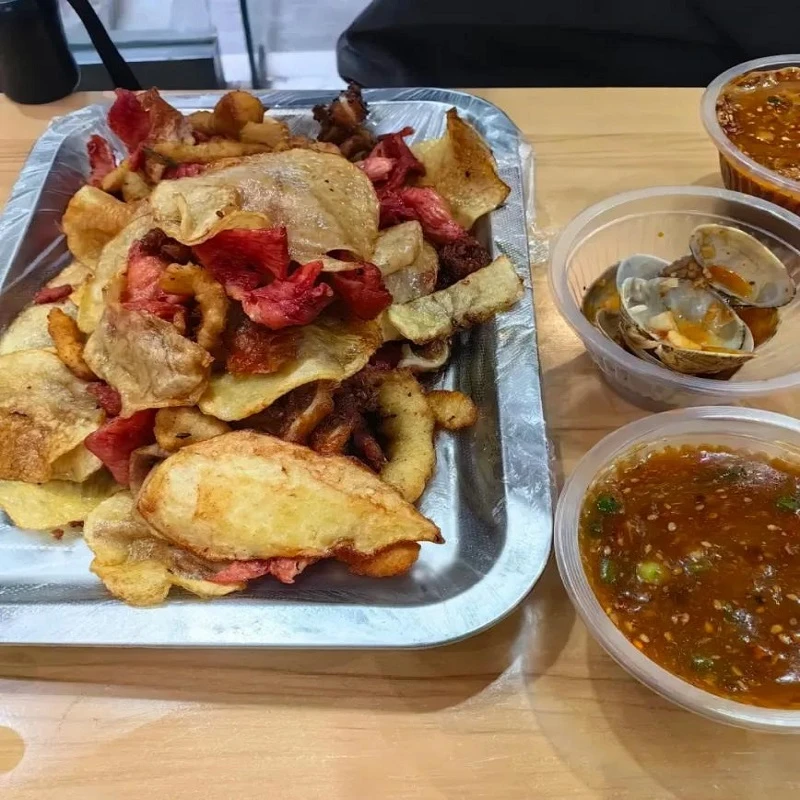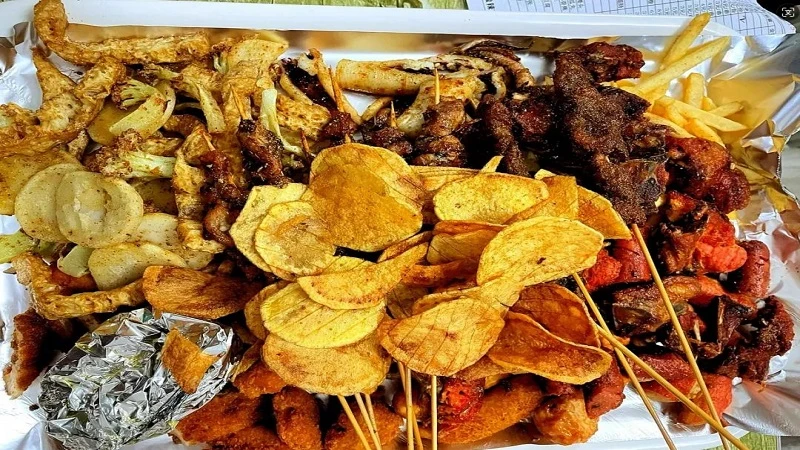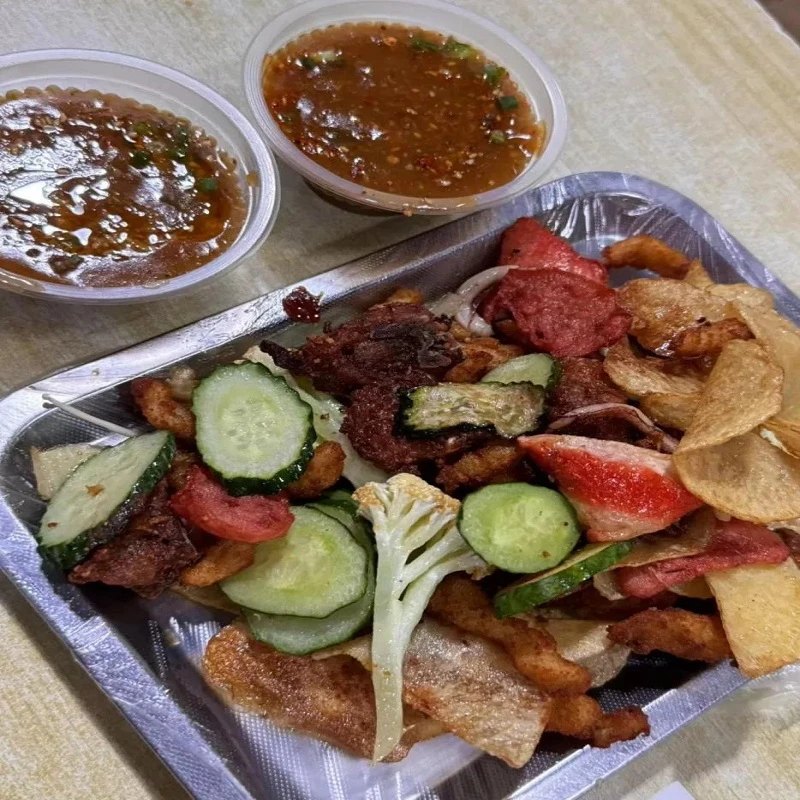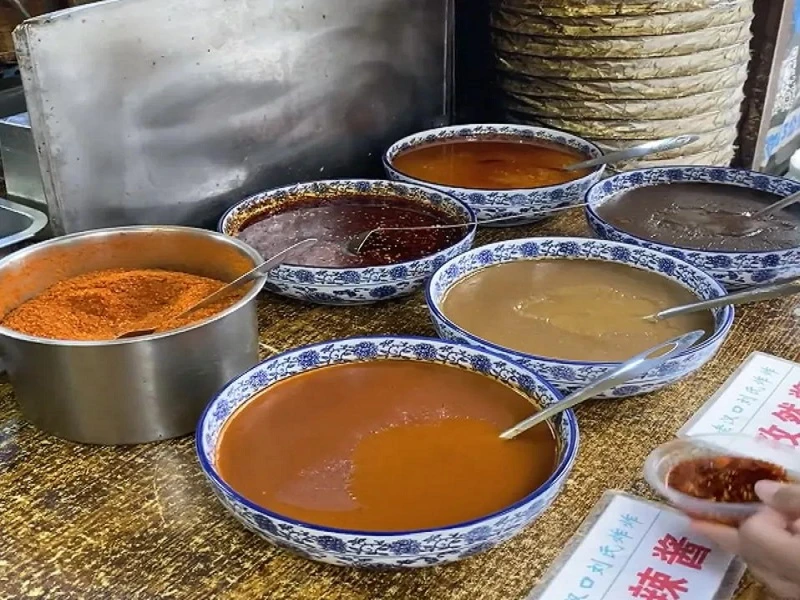A Unique Take on Fried Foods: Where Quantity Meets Quality
After two decades of indulging in various fried snacks across China, I thought I had seen it all. Yet, the moment I stepped into Wuhan, my assumptions were turned upside down. The city introduced me to a culinary phenomenon that I had never encountered before: Zhazha (炸炸), a style of fried food unique to Wuhan.
At first glance, the bustling "Zhazha " shops like Liu Ji, Hu Ji, and Liang Fang Hu might remind one of the typical northern Chinese fried skewer stalls. But the long lines snaking out of these establishments piqued my curiosity. Despite the sweltering 30-degree heat, I found myself queuing up, driven by the desire to understand what made Wuhan's fried offerings so special.

Once I had a taste, I realized that Wuhan's Zhazha was a far cry from the fried snacks I was accustomed to in the North. My initial skepticism quickly gave way to admiration for the bold flavors and unique presentation.
In my hometown, ordering fried foods is a simple affair—grab a plate, pick your skewers, and hand them over to be fried. But in Wuhan, the process begins with a menu. You select what you want, not by skewers, but by portions. Misjudging the sizes, I confidently ordered five servings of potato slices, only to be met with a concerned look from the shop owner. "Are you sure you can finish all that?" they asked. With a laugh, I insisted, not realizing what was in store.
It turns out, a single serving in Wuhan is much more generous than what I was used to. When my order arrived, I was faced with a mountain of crispy, golden potato slices, more than enough to challenge even the most determined food lover. Each slice was perfectly fried to a crisp, akin to a delicate potato chip, but with an added layer of flavor that only deep-frying can bring.
Wuhan's fried lotus root is another local specialty that quickly became a favorite of mine. Unlike the battered and fried lotus root pockets found in other regions, these were fried directly, creating a light, crisp exterior with a tender, slightly sweet interior. The sight of the fine lotus threads stretching as you take a bite is a testament to the skill involved in their preparation.
Even the humble crab sticks, often a staple of fried food stalls, take on new life in Wuhan. Here, they're fried to a light, airy crispness that contrasts beautifully with the soft, melt-in-your-mouth texture inside. Every Zhazha shop in Wuhan seems to have its own signature items that keep customers coming back, driven by cravings that won't be satisfied until they've had their fix.
The Magic of Dipping Sauces: A Flavorful Adventure
The dipping sauces in Wuhan are what truly elevate the Zhazha experience. Unlike in the North, where seasonings like cumin and ketchup are often brushed onto the skewers themselves, Wuhan offers an array of thick, flavorful sauces served on the side. As you approach the counter to collect your order, you'll find disposable bowls and large containers of dipping sauces waiting for you, accompanied by a selection of chopped scallions, minced garlic, chili powder, and sesame seeds.
These sauces are the heart and soul of Wuhan's fried foods. Whether it's the rich, spicy cumin sauce, the sweet and tangy chili sauce, or the garlicky goodness of the garlic sauce, each one offers a unique flavor profile that pairs perfectly with the fried treats. Some locals even mix the sauces to create a personalized dipping experience, adding yet another layer of complexity to the meal.
As I drizzled a spoonful of sauce over my "Zhazha," I could almost hear the sizzle as the hot, crispy surface met the cool, flavorful dressing. The combination of textures and flavors—sweet, salty, spicy—created a sensory experience that was nothing short of addictive. Each bite was a revelation, with the flavors dancing across my palate, making every mouthful a journey in itself.
The Secret Spots for the Best Zhazha
The best Zhazha shops in Wuhan are often hidden in plain sight, tucked away in residential neighborhoods far from the bustling commercial streets and night markets. While some shops are marked on maps, finding them can still be a challenge, requiring a bit of local knowledge or a friendly nudge in the right direction from a nearby resident.
These hidden gems offer more than just delicious food; they provide a glimpse into the heart of Wuhan's community life. As you wander through the narrow, shaded alleyways, the contrast between the city's rapidly developing skyline and these quiet, well-preserved pockets of history becomes strikingly clear. The towering modern buildings give way to tranquil, orderly apartment blocks that exude a sense of calm and familiarity.
Finally, after navigating the twists and turns, you arrive at a cozy, unassuming Zhazha shop. The aroma of decades of perfected recipes greets you, along with the sight of small stools and benches, inviting you to sit and savor the moment. These are places where food and memory intertwine, creating experiences that linger long after the last bite.
In the grand tapestry of Chinese cuisine, Wuhan's Zhazha might be just a small dot, but it's one that leaves a lasting impression. For those who have grown up with these flavors, Zhazha represents the comfort of childhood and the simple joys of life. For newcomers like me, it's a delicious discovery that adds another layer to the rich and varied culinary landscape of China.



